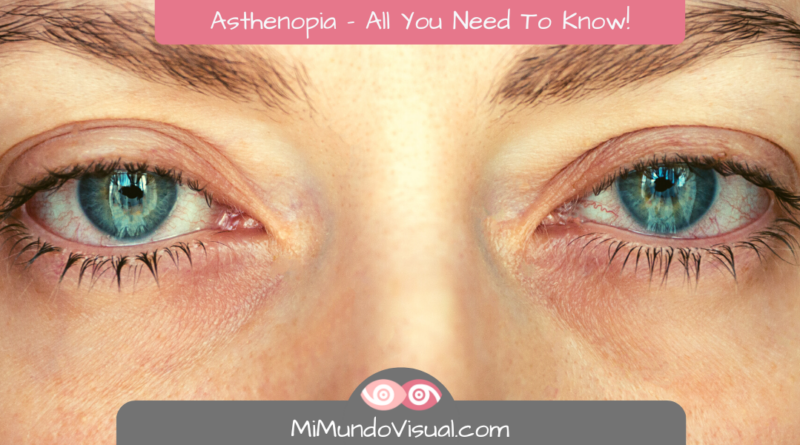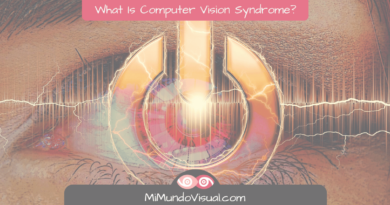Asthenopia – All You Need To Know!
Table Of Contents
You may have never heard of Asthenopia, but if we’d call it ‘Visual Fatigue,’ all the necessary bells in your head would potentially ring. There you go! Asthenopia is ‘Visual Fatigue.`However, what else is there to know about Visual Fatigue?
You might be interested in…
- Color Blindness – Daltonism
- What Is A Stye And Why Do They Appear?
- 7 Questions About Myopia Answered!
- Ametropia?
- What is Computer Vision Syndrome?
- Eye Fatigue – Asthenopia – All You Need To Know!
- 4 Questions About Cataract Surgery
Download our Free Amblyopia Guide
What Is Asthenopia?
Asthenopia comes from the Greek origin of the word (“ἀσθένεια” [aszeneia] ‘weakness’ and “ὤψ” [op] ‘sight’), which refers to overexertion or visual overload, usually of near vision, due to Fatigue of one of the eye’s internal muscles, the ciliary muscle, which is responsible for pressing on the lens so that it can focus images for clear vision.
What Are The Causes Of Asthenopia?
Anything that causes visual overexertion will be a cause of Asthenopia or visual Fatigue, whether it is due to:
- Prolonged activities in near vision, without breaks, looking at digital screens, reading a book, or sewing… activities of great ocular effort.
- Or, prolonged activities in distant vision, without breaks, such as when driving.
- Or even activities requiring great effort due to the constant change of near and far focus.
- Inadequate exposure to light, either too little or too much.
- Dry eyes can also cause eyestrain.
- Some medications for the treatment of acne, hormonal, antibiotics, anxiolytics, sleeping pills, etc.
- Binocular vision and accommodative dysfunctions.
- Undiagnosed, uncorrected, or improperly corrected refractive errors.
- Lack of sleep
- Refractive surgery
- Adverse environmental conditions, heat, air, smoke, air conditioning…
Differences Between Asthenopia And Presbyopia
It is important to distinguish Asthenopia from presbyopia. Presbyopia or eyestrain is one of the causes of Asthenopia since it refers to a refractive problem. It is not a type of Fatigue.
Presbyopia is a physiological condition that causes the accommodative system to not work correctly, and Asthenopia is overexerting the visual system; being in good health, it is only a functional problem and not physiological, as is the case of eyestrain or presbyopia, which is related to age.

Types of Asthenopia or Visual Fatigue
The types of Asthenopia depend on the cause or triggering factor.
The most common visual Fatigue today is digital Fatigue, also known as computer vision syndrome, which develops due to excessive hours spent in front of electronic device screens (an average of 10.5 hours in people under 30 years of age).
Digital Visual Fatigue is characterized by:
- Excess exposure to blue-violet light from electronic screens, in addition to Asthenopia, could lead to future retinal damage and premature aging of some ocular structures.
- Continuous focusing for long hours requires constant effort on the part of the ciliary muscle responsible for the accommodative system.
- Not blinking enough in front of a screen. Blinking frequency decreases, leading to dryness, stinging, and itching…
- The general posture of the whole body is usually forced, static, and maintained for long hours, which can cause muscular discomfort, cervical, lumbar, etc.
The increase of visual Fatigue at work is such in our current society that we thought it convenient to recommend the reading of a study that shows us the ocular fatigue syndrome and its relation with the working environment.
Computer Vision Syndrome is part of the accommodative asthenopia type. It is a visual fatigue caused by continuous work in near vision, i.e., due to the constant effort in accommodation by the ciliary muscle and the crystalline lens to form a clear image on the retina.
What Are The Symptoms Of Asthenopia?
The most common symptoms of Asthenopia can be:
- eyestrain
- heaviness in the eyes
- dryness or tearing
- decreased visual acuity
- blurred or double vision
- eye redness and swelling
- stinging, itching, burning, or stinging
- gritty sensation
- difficulty keeping eyes open – sleepy feeling
- increased sensitivity to focus on the bright screen light
- spots in the field of vision
- sore shoulders, neck, back, neck pain, neck pain
- headache or feeling of congestion
- dizziness
How to prevent Asthenopia?
- Pauses every hour to rest the eyes, we can stand up, focus on an object that is far away, or, for example, look out the window.
- Adequate lighting with natural light that enters the room and a more intense spotlight that covers the work area; watch for reflections and contrasts.
- Keep eyes lubricated, avoid dry eyes, and blink often or moisturize them with artificial tears if necessary.
- Follow correct ergonomic guidelines, with proper posture with a straight back supported by the back of the chair, both feet on the floor, and keeping a distance from the computer screen of about 40-50 cm.
- Head inclination of 25 degrees to the horizontal surface reduces neck and shoulder tension.
- Optimize the focus and have everything we need at our fingertips to avoid sudden movements in our focus.
- Have optical filters that can block the blue light wave.

How to treat Asthenopia?
The treatment of Asthenopia is based on incorporating these changes in daily habits and in our environment to maintain good visual hygiene. You could also include a series of eye exercises or yoga for the eyes to alleviate eyestrain.
In the following link, you have a series of exercises that you can apply in your daily routine to help prevent Asthenopia.
If your eyes feel too tired for too long, don’t hesitate to make an appointment with your eye doctor. He can diagnose Asthenopia and find the best solution to alleviate this Fatigue with ergonomic and visual advice.


